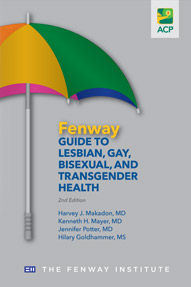Unmask malnutrition with careful questions
Increasing awareness of the harmful effects of under- and overnutrition can in turn increase nutritional assessments in primary care.
An 84-year-old woman had hypertension, arthritis, a history of chronic heart failure, and mild cognitive impairment. Suddenly, her weight dropped from 110 to 100 pounds.
Her physician, Evelyn C. Granieri, MD, MPH, MSEd, who had started her career in health care as a registered dietitian, started to dig for answers. She already knew the patient was living alone. A home health assessment discovered that the stove was inaccessible and the refrigerator contained only cereal and milk.

Dr. Granieri responded by having the home health service clear out the stove and arrange for food delivery and family visits, having a dietitian talk to the patient to develop a grocery list, simplifying the patient's medication regimen to once daily, and ensuring that a family member checked in regularly on her status.
As a result of these efforts, the patient gained 6 pounds and was able to maintain it, a critical factor in allowing her to stay in her home for 3 more years until her death.
Dr. Granieri acknowledged that her background may make her more likely than other internists to look at the impact of nutrition.
“Malnutrition is not on most physicians' front burner because we're not trained to look at these things to understand the impact of poor nutritional status on quality of life. We're not paid to do the counseling,” said Dr. Granieri, chief of the division of geriatric medicine and aging at Columbia University College of Physicians and Surgeons in New York.
But as the Affordable Care Act encourages health care systems to address how to care for someone with chronic underlying illness, nutrition reimbursement may come into its own, said Douglas Seidner, MD, ACP Member, an associate professor of medicine and director of the Vanderbilt Center for Human Nutrition in Nashville, Tenn.
For now, experts say increasing physician awareness of malnutrition, which includes overnutrition as well as undernutrition, and learning how to best screen, treat, and, when necessary, refer to nutritional experts would be steps in the right direction.
“Malnutrition causes functional abnormalities in almost every organ system and should be aggressively addressed,” said Dr. Seidner, a gastroenterologist with clinical nutrition training.
Dr. Granieri said that screening, evaluation, and counseling about malnutrition can be done relatively quickly, especially with practice.
The payoff, she said, can be life-changing. She credits a focus on malnutrition and a team effort for helping her elderly patient avert what would have otherwise been a quick path to a nursing home or adverse outcome.
“The goal of all of this is not just to gain weight,” she said. “It's to improve people's quality of life.”
Recognizing risks
To pinpoint patients who might be affected by malnutrition, internists may have to cast a wide net. Given a new focus on chronic inflammation as a cause of malnutrition, internists should consider at risk any patient with a chronic disease like heart disease or diabetes who may secondarily be developing malnutrition.
“It's a revolution in the way we view this. So doctors are really confused and I don't blame them,” said David R. Thomas, MD, FACP, a professor emeritus of geriatric medicine at the St. Louis University School of Medicine in Missouri.
Regardless of whether inflammation is a factor, Dr. Granieri said risks for undernutrition include the following:
- chronic illness, such as diabetes, chronic obstructive pulmonary disease, degenerative joint disease, or chronic pain syndrome,
- functional impairments, such as difficulty going up and down stairs, going shopping, or cooking, and
- medications, such as opioids, diuretics, and some blood pressure medications that can cause nausea, anorexia, and change in taste.
Drs. Granieri and Seidner and others said patients with malignancy, hyperthyroidism, dental problems, inability to swallow, eating disorders, and dementia or those who are trying fad diets are also vulnerable. Social and economic challenges, as with Dr. Granieri's patient, are also factors.
For older patients, additional risks include depression, cognitive impairment, oral health, polypharmacy, living alone, and substance abuse, according to Gordon Jensen, MD, PhD, professor and head of nutritional sciences at Penn State University in University Park, Pa. And because aging leads to changes in taste and smell, always ask these patients about their food intake, Dr. Thomas advised.
In young women, Dr. Granieri looks for hyperthyroidism, anxiety, eating disorders, “a weird diet they read about,” or substance abuse.
Overnutrition is just as critical an issue for internists, if not more so, given the epidemic of obesity, Dr. Granieri said.
At a minimum, internists should monitor patients' body mass index (BMI) and offer recommendations, resources, and counseling, according to Dr. Seidner.
“Some practitioners have a mistaken impression: ‘She's huge. We don't have to worry about feeding her for a few weeks,’” Dr. Jensen said. “Nothing could be further from the truth.”
Asking the right questions
The 2011 clinical guidelines on nutrition screening, assessment, and intervention in adults from the American Society for Parenteral and Enteral Nutrition (ASPEN) discuss nutrition screening as a key component of nutrition care.
Just as a nutrition screening is standard for patients admitted to hospitals, “in the best of all worlds” it should be standard for outpatient visits as well, said Charlene Compher, PhD, RD, professor of nutrition science at the University of Pennsylvania School of Nursing in Philadelphia and vice president of ASPEN.
Don't worry about which of the many available screens to use, said Dr. Seidner. “The screen a practitioner adopts is not as important as actually picking one,” he said.
Dr. Thomas recommends starting with the 6-question Mini Nutritional Assessment and then getting more insight from a dietary history by asking questions like “How many meals do you eat a day? Is it mostly carbs? Salads? Do you eat with someone?”
Dr. Granieri also recommends digging deeper if a patient seems at risk by asking, “Have you changed what you're eating? Have you started a new medication lately? Has your weight changed since then?”
Make it a priority to have a good weight history by measuring and recording weight and height over time, something a physician extender can help with, said Dr. Jensen.
Consider it a red flag if the patient has lost 10 pounds over the past 1 to 3 months. “Be attentive,” he said. “Even if the patient says he's trying to lose weight, if there's a weight loss of 10 pounds bring him back a month later and check again.”
Finding solutions
Internists should be able to manage mild malnutrition and monitor it on a follow-up visit, Dr. Seidner said.
Advise patients on what foods to eat and emphasize that their loss of function is related to their loss of muscle mass, Dr. Thomas said. If appropriate, offer nutritional supplements to build muscle, then work on exercise to build up or maintain muscle mass.
He noted that because weight loss after age 65 is associated with a higher incidence of death, he encourages those patients not to lose weight. He recommends that older patients who are finding food tasteless because they've been told to avoid salt, sugar, or otherwise limit their diet should be given the green light to lift those restrictions.
“I tell them, ‘You're 80. You probably don't need to restrict your salt or calories,’” he said.
Meals on Wheels or senior centers can be good resources for some patients, Dr. Compher said. She also recommends that patients access educational materials from the Academy of Nutrition and Dietetics. For some patients, a solution may be as simple as getting their dentures refitted or modifying the texture of their food, she said.
For patients with dementia who are usually not as hungry, Dr. Granieri tells them eating is something else she's prescribing for them. She gives patients homework to show what they ate for 1 week.
Dr. Granieri strongly advises against using drugs to try to increase appetite in older adults. “They don't work and are dangerous,” she said.
Involve the family, if possible, to either make meals for the patient or just check in to see if the patient is eating. This has the added benefit of bringing families into the circle of care, Dr. Jensen said.
If the patient is at risk, talk about nutrition at every visit, said Dr. Granieri. “If they gain a pound, give lots of accolades,” she said.
For overnourished patients, while supplements can help, weight loss is critical, said Dr. Thomas. Have a realistic approach, Dr. Granieri advised. For example, she suggests telling the patient to skip dessert 4 times 1 week or park the car farther away from store.
“Don't hand the patient a diet with 1,500 calories when that patient is now eating 5,000 calories a day. Start small and the patient may lose a pound or 2 over a month,” she said.
Patients who've had bariatric surgery are also at risk for micronutrient deficiency, something Dr. Seidner said he's seeing increasingly in his practice. Those patients often stop taking vitamin and mineral supplements after feeling well for a few years and start presenting with iron deficiency and pale skin due to anemia.
When to refer
If there is no improvement, if the malnutrition has worsened, or if the malnutrition is more severe to begin with, refer to a nutritional expert, Dr. Seidner said. Unlike time-pressed physicians, a nutritionist can devote a block of time to talk to patients about their diet and psychosocial issues.
Reimbursement for nutrition services varies, and Medicaid and Medicare patients must often pay out of pocket, he pointed out, but the fees can be covered for patients with diabetes and renal disease. Dr. Jensen said dietitian services for obesity counseling are sometimes covered as well.
Patients with very severe, life-threatening malnutrition may have to be hospitalized to avoid serious feeding problems, Dr. Jensen said.
Internists should consider consulting with not only nutritionists but also other physicians as needed, such as gastroenterologists and surgeons, along with social services, Dr. Jensen said.
For physicians, the learning curve doesn't need to be steep.
“You don't have to be an expert. Just be aware of it and the resources available nationally and in your community, and work with members of your health care team to come up with a strategy to treat this disease among your patients,” he said.
Then, said Dr. Thomas, start talking. “Don't just write prescriptions. ... Be interested in what your patients are eating. Have the discussion.”




